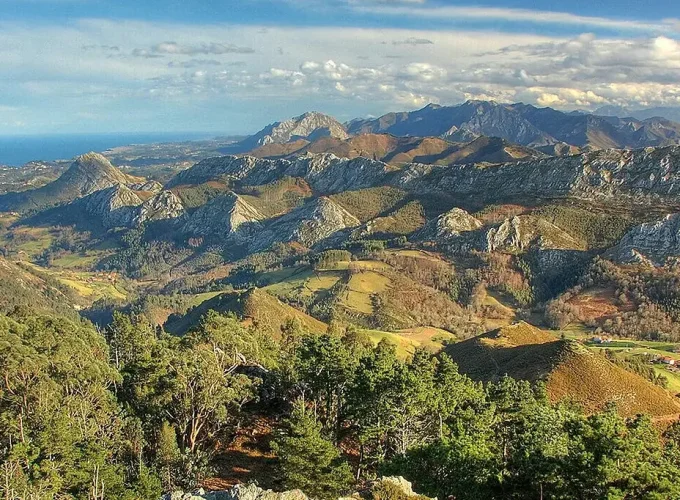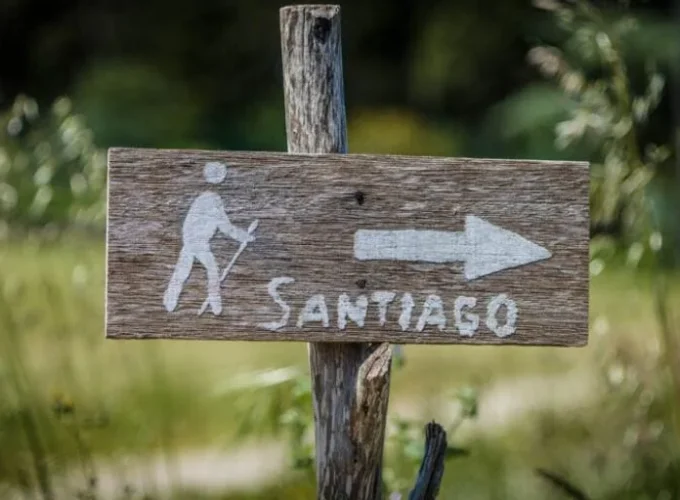Camino Primitivo Route
The Camino Primitivo, also called the Original Way, is more than just a walking path. It’s like a journey back through time, full of stories from long ago. Starting in Oviedo and ending in Santiago de Compostela, this route invites travelers to experience both old-world charm and natural beauty. While the Camino Primitivo is older and holds its own charm, other routes like the Camino Francés have also become famous over time.
As you walk, you’ll see beautiful nature and buildings side by side, reminding us of old times. What makes the Camino Primitivo special is the mix of untouched nature and lively towns, the old churches, and the big mountains in the background. Plus, meeting other travelers on the way, each with their own story, makes the journey even more memorable. There are also routes like the Camino Santiago to Finisterre that provide a different kind of experience.
Many years have gone by, and many things have changed, but the Camino Primitivo is still there, strong and beautiful. Every year, people come to walk it, while others might choose the Camino del Norte route or seek a pilgrimage through Portugal. Whether you’re interested in its spiritual side or its history, walking the Camino Primitivo is more than just a hike. It’s a chance to learn, grow, and connect with others.
Camino de Santiago Primitivo
Starting in the vibrant city of Oviedo, located in the picturesque Asturias region of northern Spain, the Camino de Santiago Primitivo unfolds as a journey through diverse landscapes and historical milestones. This trail, with its stretches of untouched wilderness and paths winding through ancient towns, offers travelers a genuine taste of Spain’s rich heritage.
Each section of the journey, whether it’s the Camino Primitivo or the lesser-known Camino de Santiago Ingles, offers terrains and experiences that challenge and reward in equal measure. These terrains not only test the physical strength of pilgrims but also offer moments of introspection and connection with nature. The Camino de Santiago de Compostela, in particular, is more than just a destination; it’s an embodiment of centuries-old traditions, spiritual quests, and tales of countless travelers who have walked its paths.
A detailed Camino Primitivo map is a treasure for those treading this route, guiding them through lesser-known spots and ensuring they don’t miss out on any of the hidden gems along the way. While the route itself is an adventure, the stories of the regions, the art in old chapels, and the local festivals and traditions bring life to the journey.
Furthermore, the Camino Primitivo is not just about walking. It’s about immersing oneself in a culture, understanding the historical significance of the regions it passes through, and forming bonds with fellow travelers from all walks of life. To walk the Camino de Santiago is to partake in a timeless tradition, creating memories that linger long after the journey’s end.
El Camino Primitivo
Embarking on the Camino Primitivo journey means immersing oneself in a rich tapestry of gastronomic delights, local festivals, and artisan crafts. As you tread along this route, you’ll encounter local vendors offering traditional Spanish delicacies that have been perfected over generations. Whether it’s the aromatic “fabada asturiana” from Asturias or freshly baked “tarta de Santiago” waiting at the end of your trek, your taste buds are in for a treat.
Another unique aspect of the Camino Primitivo is the numerous festivals that dot the calendar. Depending on the time of year you decide to make your pilgrimage, you might be able to witness vibrant local celebrations, where music, dance, and age-old customs come alive, painting the towns in hues of joy and revelry.
Art and craftsmanship are other jewels of this route. The small towns along the Camino are often home to artisans who have been practicing their crafts for decades. From handmade leather goods to intricate lacework, there’s a chance to take home not just souvenirs but pieces of the region’s heart and soul.
Moreover, while the trail leads you through historical landmarks and natural wonders, it’s the warmth of the locals that truly captures the essence of the Camino Primitivo. Engaging conversations, shared meals, and the stories told around communal tables in local hostels add a depth and richness to the experience that’s hard to put into words. This trail is not just a physical journey, but also a deep dive into the culture, traditions, and life of the Spanish heartland.
Route Camino Primitivo
Embarking on the Camino Primitivo route takes one through a series of charismatic cities and towns, each offering its unique flavor and heritage. While having a Camino de Santiago map is essential to ensure you’re on the right path, it’s the unplanned detours and spontaneous encounters that often leave the most lasting impressions.
Oviedo, the starting point, is a historical gem, boasting a plethora of ancient churches and the famous San Salvador Cathedral. Its streets come alive with the hum of daily life, juxtaposed against the solemnity of its centuries-old structures. Moving forward, Grado awaits with its picturesque bridges over the Nalon River and bustling markets. The town, with its welcoming locals and traditional Spanish cafes, offers the perfect respite before the next leg of the journey.
Salas is the next significant stop, a town renowned for its medieval charm. Its towering castle, Colegiata de Santa María la Mayor, stands as a testament to the town’s rich past. As you traverse through Tineo, the lush green landscapes provide a serene backdrop to the town’s traditional architecture. Known for its old-world inns and tranquil vibe, it’s a place where time seems to slow down.
The journey continues through Pola de Allande and Grandas de Salime, each town bringing forth distinct landscapes, from verdant valleys to rugged mountainous terrains. The final stretch before reaching Santiago de Compostela takes pilgrims through the likes of Fonsagrada and Lugo, where ancient Roman walls and mystic chapels provide glimpses into Spain’s bygone era.
As the sun sets, painting the sky in hues of gold and purple, and you take the last few steps of this incredible journey, remember the cities you’ve crossed, the stories you’ve heard, and the connections you’ve made. The Camino Primitivo is more than a path; it’s a living testament to time, tradition, and the enduring spirit of pilgrimage.



